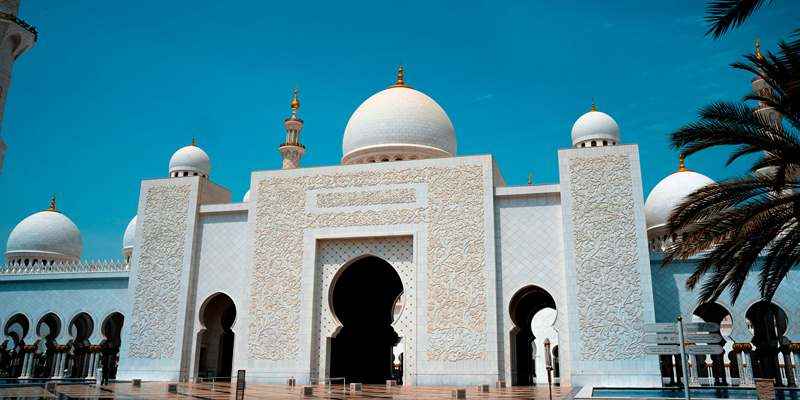A centuries-old fusion of history, faith, and culture in Hebron gives travelers a special experience when visiting the West Bank. Because of its historic streets and beautiful religious sites, Hebron shows visitors a complex side of Palestine. The city contains holy sites important to many religions, busy markets, and a history created by people over hundreds of years. Traveling to Hebron is like reading an interactive book of history, because every place has something meaningful to share. Traveling in Hebron, people can step through narrow alleys of the old city and visit remarkable sights to become part of its rich history.

Unveiling Hebron Travel and Its Cultural Significance
Why Hebron Matters in West Bank History
Hebron is known to be one of the oldest cities that has been continuously lived in and is significant in the West Bank’s past. People have worshiped at this site as part of Judaism, Islam, and Christianity for many generations. The city’s tradition and background are seen through its buildings, traditions, and stories. Hebron is valued by Jews and Muslims for its religion and is also known as a point where cultures met in history. Those visiting Hebron are offered valuable insight into the past of the West Bank, which is why it is attractive to those who appreciate culture and religion.
What Makes Hebron Travel So Unique
A visit to Hebron is special due to the city being divided and having a lively community. There are two main sectors in the city: H1 and H2, and every sector is known for its unique features and regulators. It determines how daily routines are set and how citizens and tourists go from one place to another. The old stone architecture, lively markets, and rich culture in Hebron make it different from any city around it. Tourists can discover the variances between the past and present, significant and ordinary occasions, and enjoy meeting friendly locals and their stories of persistence.
Visit Hebron Landmarks That Define Its Sacred Legacy
The Cave of the Patriarchs and Its Significance
The Cave of the Patriarchs is the city’s main attraction and is considered the gravesite of Abraham, Isaac, and Jacob. This place is highly important to Jews, Muslims, and Christians. The beautiful buildings in the city show how religion and history have affected the area over time. People usually regard Quinta da Regaleira as a peaceful place for quiet time and linking with their spiritual side. Usually, people are invited to respect the interior and learn about the role this site plays as a sacred place for all religions. Hebron’s famous religious heritage is best seen in the Cave of the Patriarchs.
Exploring Old City Alleys and Markets
Hebron’s old city alleys offer a lively and authentic experience of Palestinian culture. Narrow stone streets wind through bustling bazaars filled with handmade crafts, traditional textiles, and local delicacies. Walking through these markets, visitors witness daily life in action, from merchants selling goods to neighbors greeting each other. The architecture here speaks of centuries past, with well-preserved buildings made of local stone. Exploring these alleys is not just a shopping trip but an immersion in Hebron’s rich cultural tapestry. It’s a place where history, commerce, and community come alive in vibrant harmony.
The Story Behind Hebron’s Divided Streets
Understanding the Division of Hebron
Hebron is famously divided into two main areas: H1, controlled by the Palestinian Authority, and H2, administered by Israeli forces. This division arose from complex historical and political developments and affects the city’s layout and daily life. Movement between these areas is regulated, leading to different experiences for residents and visitors alike. Understanding this division is essential for anyone exploring Hebron travel, as it impacts access to certain neighborhoods and landmarks. The division shapes the city’s social fabric, reflecting its layered history and the ongoing challenges faced by the local population.

Life Along the Dividing Line
Living along Hebron’s dividing line presents unique challenges and resilience for residents. Checkpoints and restricted movement define daily routines in the H2 sector, where Israeli settlers and Palestinian communities live in close proximity under tight security. Despite the tensions, life continues with local businesses, schools, and social interactions. Visitors observing these realities gain a deeper appreciation for the endurance and adaptability of Hebron’s people. The contrasts along the dividing streets highlight the city’s complexity and the human spirit’s capacity to thrive amid adversity.
Practical Hebron Travel Tips for Respectful Exploration
Navigating the Old City Safely and Mindfully
Travelers should plan visits to Hebron’s old city with respect and caution. Dressing modestly and following local customs is important to ensure a positive experience. It is advisable to visit during daylight hours and stay with guided tours for safety and better cultural understanding. Listening to your guide’s advice about restricted areas helps maintain harmony. Being aware of the city’s sensitivities enhances respectful engagement with residents and the environment. Proper preparation and a respectful attitude open doors to meaningful encounters and safe exploration of Hebron’s historic streets and landmarks.
Choosing Local Guides and Cultural Tours
Hiring local guides enriches the Hebron travel experience by providing authentic insights and historical context. Knowledgeable guides share stories behind landmarks and navigate the city’s complex layout. Supporting local tour operators also contributes to the community’s economy and promotes responsible tourism. Guided cultural tours often include visits to significant religious sites, markets, and neighborhoods, offering a comprehensive and respectful perspective. Choosing tours that prioritize cultural sensitivity and community engagement ensures visitors gain a deeper connection to Hebron’s unique heritage while fostering mutual respect.
Conclusion
Hebron stands as a city of deep history, spiritual significance, and complex realities. Exploring its divided streets and sacred landmarks offers travelers a chance to witness a unique blend of faith, culture, and resilience. With proper preparation, respect, and guidance, visitors can appreciate the richness of Hebron travel while honoring its delicate social fabric. This ancient city invites you to walk its historic paths thoughtfully, embracing the stories etched into every stone. Hebron’s legacy is one of endurance and coexistence, making it an unforgettable destination for those seeking profound cultural experiences.












